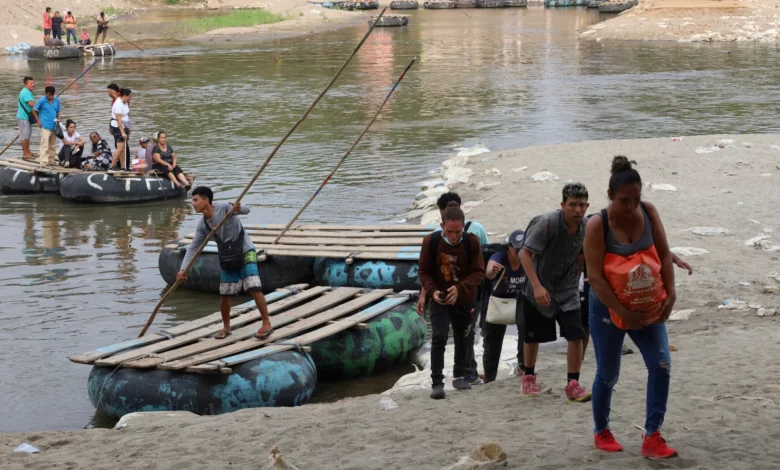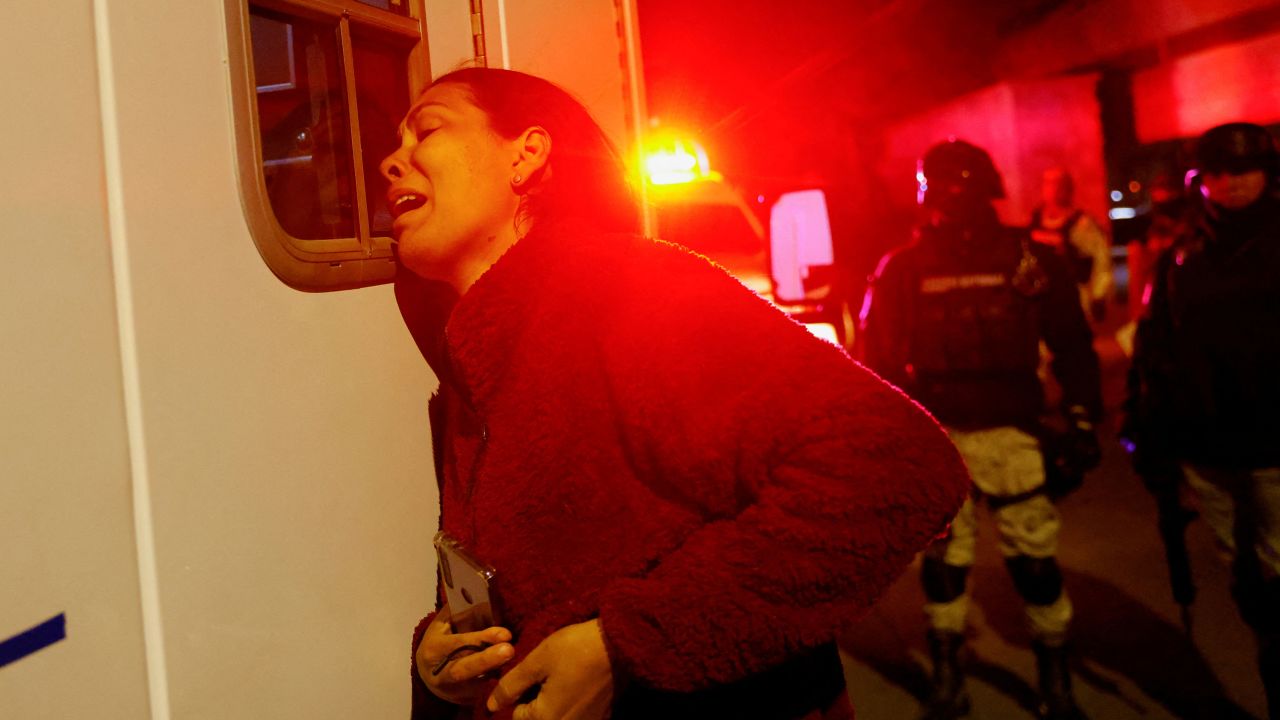
“The situation [in Ecuador] is very bad. There’s a lot of crime. It’s really bad,” she said as she and her family recently crossed the river on a flimsy raft along with roughly a dozen migrants who typically pay a dollar to local guides to help them across, with luck, without getting wet.
Other than the Suchiate, there was nothing stopping the family from crossing from the Guatemalan department of San Marcos into the Mexican state of Chiapas. Historically, migrants coming from the south have faced few or no restrictions in Guatemala or Mexico. But that dramatically changed in 2019.
In May of that year, then-United States President Donald Trump threatened to impose tariffs on all Mexican goods entering the US if Mexico did not limit the number of Central American migrants moving through the country.
After intense negotiations between the two countries, Trump announced on June 7 a deal had been reached by which Mexico was going to “take strong measures to stem the tide of migration through Mexico, and to our southern border,” the then-president tweeted.
Two weeks later, Mexico’s defense secretary announced that nearly 15,000 troops had been deployed to the US-Mexico border, in addition to 2,000 members of the National Guard that had already been deployed to Mexico’s southern border with Belize and Guatemala, adding to the 4,500 troops already spread across the area.
But the enforcement has been chaotic, sporadic and, in the words of a former top Mexican official, “inefficient.”
Tonatiuh Guillén was commissioner of Mexico’s National Migration Institute until 2019. After only seven months in his post, he resigned because he strongly disagreed with his boss, president Andrés Manuel López Obrador’s decision to “militarize Mexico’s borders.”

“Mexico became a control territory, [a place of] a severe migration policy, detentions, deterrence, and expulsions. And we also must point out … that despite these severe measures, we have to recognize that they have been very inefficient. If we compare the number of migrants that came into Mexico in 2018 or the following year, when these measures were implemented, those numbers have tripled or quadrupled,” Guillén told CNN.
Asked whether Mexico was doing the United States’ dirty work when it comes to immigration policy, Guillén said that “Mexico’s migration policy is aligned with the overall goals and strategies the US government had under Trump, and now, by extension, under Biden.”
US migration policy today in many ways still depends on Mexico’s cooperation, as another immigration deal illustrates: Earlier this month, the White House announced that Mexico agreed to take back migrants from Cuba, Haiti, Nicaragua, and Venezuela beginning on May 12, the day after Title 42 ended. The agreement marks the first time the US will deport non-Mexicans back across the border.
‘This is not about doing the United States’ dirty work’
Mexican President Obrador denies Mexico is doing the US’s bidding when it comes to migration.
“This is not about doing the United States’ dirty work,” he said on his daily morning address on March 2, arguing that cracking down on undocumented migration was necessary to protect victims of smugglers.
“This is about protecting migrants. Just look at what’s happened, so many tragedies involving migrants in trailers,” the president said. Fifty-one migrants were found dead in sweltering conditions inside a semitruck in San Antonio, Texas last June. Two months later, another 47 migrants were found alive crammed inside a truck in Matehuala (San Luis Potosí state), Mexico.
López Obrador says part of the solution is “cooperating with the U.S. government so that there’s no chaos, and much less violence, at the border. We’re also helping at [Mexico’s] southeast [border] so that migrants are protected. We have been receiving information that there are many smugglers, more than usual, many traffickers of people, who are offering to transport migrants for $8,000 to $10,000,” the president said.
But Guillén, his former immigration commissioner, points out that tragedies have also occurred in the course of immigration enforcement, saying he was horrified by the fire that killed 40 mostly Central American migrants at a facility of Mexico’s National Migration Institute in Ciudad Juárez, across the border from El Paso, Texas.
He sees this tragedy as one of the most deplorable examples of his country’s failure to address its migration challenge humanely.

Clashes between members of the National Guard and migrants became frequent at the Mexico-Guatemala border during the summer of 2019. There have also been clashes in the following years which have suggested that Mexican authorities do not have the numbers nor the strategy to adequately confront the problem.
According to statistics published Monday by the Mexican government, between September 2021 and June of last year, nearly 23,458 members of Mexico’s armed forces were deployed to the country’s borders to enforce Mexican immigration policy. The military detained 345,854 migrants during that period.
Still, it seems Mexico is trying a balancing act between tough enforcement and a welcoming approach. The office of the National Migration Institute in Chiapas state, which borders Guatemala, told CNN that between the beginning of November and May 6, they processed more than 81,000 migrants coming from over 100 countries, mainly Venezuela, Ecuador, and Haiti.
That’s what Marilyn Lomas and her family, the Ecuadorian migrants, were hoping to do: get a permit to travel across Mexico unimpeded and then cross the border into the United States.
“With God’s favor, everything is possible,” she said.




